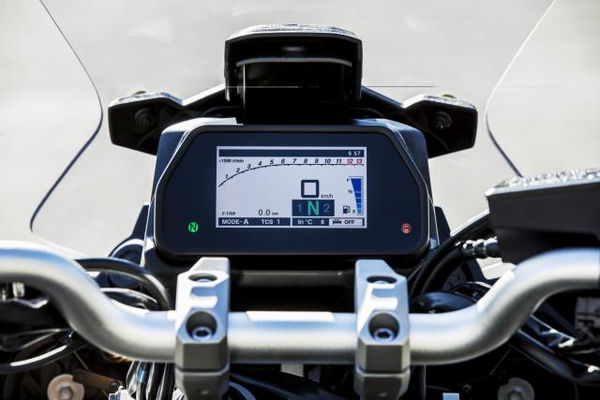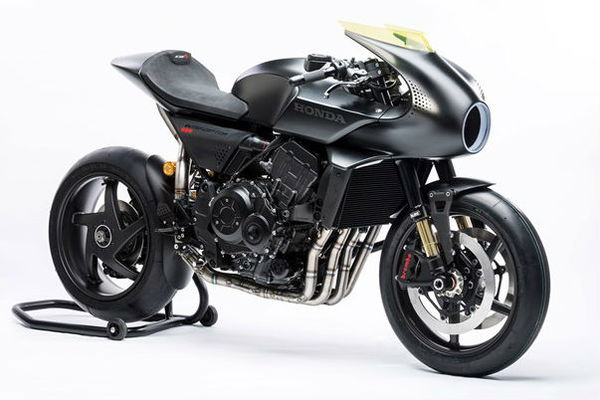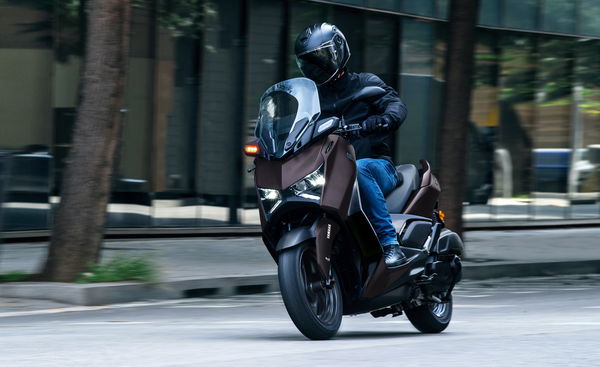Top 10 most important new developments at EICMA 2017
We love #4

AS the dust settles on the Eicma motorcycle show in Milan, which itself came hot on the heels of the Tokyo Motor Show, we’ve got a clear view of the new bikes for next year.
We’ve already picked out the surprises of the show but what were the ideas, technologies or trends that are spreading fastest or setting the most tongues wagging?
Here’s a run-down of the ones that stood out to us.

10: TFT screens
Thin-film-transistor liquid-crystal displays, to give them their full name were almost unknown on bikes until very recently. The actual technology is pretty boring (TFT is simply a type of LCD) if very useful, but the term is now generally used on bikes to mean a full-colour, tablet-style display. This year they’re on loads of new models – the Kawasaki H2 SX SE, the new Triumph Tigers, Ducati Panigale V4 and the Yamaha Tracer 900GT for example. Strangely, they’re actually probably cheaper to manufacture than traditional, mechanical instruments, but their cool look and ability to change the look of a display means that at the moment they’re still kept for higher-end bikes.
LEDs have been with us for ages, particularly in indicators, DRLs and tail lights. But until recently full LED headlights were still reserved for high-end, expensive bikes. Not anymore. The term ‘full LED lighting’ appeared in virtually every press release we picked up in Milan, including the one for BMW's new C400 X scooter (pictured). It’s good news from several perspectives – the lighting is better and bulbs shouldn’t blow often – but we wonder whether relatively expensive LED lights might start pushing insurance premiums up once they’re regularly getting replaced after minor accidents.
It’s another technology that’s been seen before, but which is spreading fast to be adopted by ever more high-end models, like Ducati's new Multistrada 1260 (pictured). Cornering lights, which come on when the bike is banked over to illuminate your way around a turn, look set to become a common fixture, particularly on tourers but probably spreading to all sorts of bikes over the next few years.
Not so much a trend as a talking point. The only real new offering from Suzuki was the SV650X, essentially a madeover SV650 already seen in Tokyo. The firm didn't even hold a press conference, an unusual move for a Japanes manufacturer at Europe's biggest motorcycle show. Where are Suzuki’s new bikes? What’s happened to the Concept GSX that appeared to preview a new Hayabusa in 2015? What about the turbocharged twin that was shown in 2013 and 2015 at Tokyo? Hello? Suzuki? Anyone there?
A few years ago the parallel twin was the ugly sister of motorcycle engine layouts. It was worthy but dull, reserved for stuff like the Kawasaki ER5. There were occasional sparks – Yamaha’s TRX850 and TDM, for instance – but they were few and far between. It’s had a resurgence over the last decade, though, and seems to be getting even more fashionable now. Notable parallel twin newcomers for 2018 include the new BMW F850GS and F750GS, the KTM 790 Duke and 790 Adventure R Concept (the latter pictured), the Royal Enfield Interceptor and Continental GT and the Yamaha Tenere 700 World Raid Prototype. It makes sense – parallel twins are light, compact and cheaper to make than V-twins.
Whether it was Yamaha’s MOTOROiD (pictured) or Honda’s Riding Assist-e it was clear that the development of rider aids is reaching the point where manufacturers can start to seriously contemplate developing bikes that can actually stand upright unaided, using sensors like IMUs to pre-empt topples and tweaking their geometry or steering to counteract them. And with the MOTOBOT we’re getting ever closer to self-riding bikes that could actually take over riding duties, either when you’re bored or when you run out of talent.
Ok, so this has been a constant theme for years. But remember when MotoGP adopted the four-stroke formula back in 2002? People spoke in hushed terms of the supposed 200bhp-plus that the monstrous 990cc racers were making. Ducati claimed 220hp for its 2003 Desmosedici GP bike. And now, 15 years on, you can walk into a dealer and put down a deposit on a Panigale V4 Speciale (pictured), road bike that makes 226bhp. Just try not to knock it over, like Ducati did on its own stand at Milan…
恭喜入手全世界第一台Panigale V4 Speciale! 賀成交!
#Ducati #PanigaleV4Speciale #PanigaleV4 pic.twitter.com/uIxp5RqJTv— 這樣還有救 (@tone2199) November 10, 2017
Another tech that’s creeping from high-end superbikes and racer to the mainstream, quick-shifters are appearing on loads of 2018’s new models, from the Tracer 900GT to the Kawasaki H2 SX SE (pictured), KTM’s 790 Duke and Triumph’s Tiger 1200. And those that don’t have them as standard are increasingly getting them as optional extras, like BMW’s new F-series twins. Surely these will be standard fare on pretty much everything within a few years at this rate.
Will the demand for adventure bikes ever dry up? There’s no sign at the moment, and this year it’s the turn of the middleweights to have their moment in the limelight. Whether it was the revamped Triumph Tiger 800, the new BMW F850GS and F750GS, the KTM 790 Adventure R prototype, Yamaha’s Tenere 700 World Raid Prototype, Moto Guzzi’s V85 (pictured) or Honda’s new Africa Twin Adventure Sport, mid-sized adventure bikes were the hot ticket at Eicma.
Retro bikes have been hot for a few years, but now the fashion appears to be to combine retro themes with a modern edge. So while the likes of Royal Enfield’s new twins and Benelli’s Imperiale flew the pure retro flag in Milan, they were overshadowed by neo-retros like Honda’s CB4 Interceptor (pictured), CB1000R, CB300R and CB125R, Husqvarna’s Vitpilen 701, Kawasaki’s Z900RS CAFE, Suzuki’s SV650X and Guzzi’s V85. We approve, as these bikes can draw upon each manufactures historic highlights without hamstringing themselves with outdated running gear, suspension or brakes.











